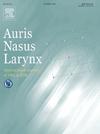Discharge destination following elective and emergency surgical tracheostomies in head and neck cancer patients
IF 1.6
4区 医学
Q2 OTORHINOLARYNGOLOGY
引用次数: 0
Abstract
Objectives
Tracheostomy in the setting of head and neck cancer may be performed either electively for prophylactic airway protection in an ablative procedure, or as an emergency due to impending airway obstruction in the setting of an obstructing upper aerodigestive tract malignancy. Tracheostomy care has biopsychosocial implications, which may require a higher level of care from carers, post-acute care, or placement into care facilities. Existing database studies have largely excluded patients with a history of head and neck cancer. This study aims to examine and compare discharge destinations for head and neck cancer patients requiring either elective or emergency surgical tracheostomies.
Methods
Retrospective cohort study (January 2010-December 2019) of adult head and neck cancer patients undergoing surgical tracheostomy in a tertiary Australian hospital network. Primary outcome was discharge destination. Secondary outcomes were mortality, morbidity, and decannulation timing.
Results
Of 188 patients (47 emergency, 141 elective), 83.0 % returned to their pre-morbid accommodation, either directly home (54.6 %), or with additional community-based services (27.7 %). There was a significant difference in post-discharge destination (p = 0.012). Emergency patients were less likely to return home compared to elective patients (OR 0.76, 95 % CI 0.32–1.79), and more likely to require additional supports on discharge(67.6 %) compared to elective(41.9 %) patients. However, these outcomes did not demonstrate statistical significance. Emergency tracheostomy patients were at higher risk of permanent tracheostomy, unplanned readmission within 30 days, and longer time to successful decannulation.
Conclusion
Emergency tracheostomy patients are likely to return to their pre-morbid place of residence but may require additional support.
头颈部癌症患者择期和急诊手术气管造口后的出院去向。
目的:头颈部癌症患者可能会选择进行气管切开术,以在消融手术中预防性保护气道,或者在上消化道恶性肿瘤阻塞时因气道即将发生阻塞而紧急进行气管切开术。气管造口术护理会对生物心理社会产生影响,可能需要护理人员提供更高水平的护理、急性期后护理或安置到护理机构。现有的数据库研究大多不包括有头颈部癌症病史的患者。本研究旨在对需要进行择期或急诊气管造口手术的头颈部癌症患者的出院去向进行研究和比较:回顾性队列研究(2010 年 1 月至 2019 年 12 月):在澳大利亚一家三级医院网络中接受气管造口手术的成年头颈部癌症患者。主要结果是出院去向。次要结果为死亡率、发病率和拔管时间:在188名患者(47名急诊患者,141名择期出院患者)中,83.0%的患者回到了患病前的住处,有的直接回家(54.6%),有的接受了额外的社区服务(27.7%)。出院后的去向存在明显差异(p = 0.012)。与择期手术患者相比,急诊患者回家的可能性较低(OR 0.76,95 % CI 0.32-1.79),与择期手术患者(41.9 %)相比,急诊患者出院时需要额外支持的可能性更高(67.6 %)。不过,这些结果并不具有统计学意义。急诊气管切开术患者永久性气管切开的风险更高,30 天内再次入院的计划外风险更高,成功拔管的时间更长:结论:急诊气管切开术患者有可能回到发病前的居住地,但可能需要额外的支持。
本文章由计算机程序翻译,如有差异,请以英文原文为准。
求助全文
约1分钟内获得全文
求助全文
来源期刊

Auris Nasus Larynx
医学-耳鼻喉科学
CiteScore
3.40
自引率
5.90%
发文量
169
审稿时长
30 days
期刊介绍:
The international journal Auris Nasus Larynx provides the opportunity for rapid, carefully reviewed publications concerning the fundamental and clinical aspects of otorhinolaryngology and related fields. This includes otology, neurotology, bronchoesophagology, laryngology, rhinology, allergology, head and neck medicine and oncologic surgery, maxillofacial and plastic surgery, audiology, speech science.
Original papers, short communications and original case reports can be submitted. Reviews on recent developments are invited regularly and Letters to the Editor commenting on papers or any aspect of Auris Nasus Larynx are welcomed.
Founded in 1973 and previously published by the Society for Promotion of International Otorhinolaryngology, the journal is now the official English-language journal of the Oto-Rhino-Laryngological Society of Japan, Inc. The aim of its new international Editorial Board is to make Auris Nasus Larynx an international forum for high quality research and clinical sciences.
 求助内容:
求助内容: 应助结果提醒方式:
应助结果提醒方式:


